How Do We Build Internet for Rural Areas by IP65 Solar Battery Enclosure?
- Richard Wang
- February 2, 2025
- 9:37 pm
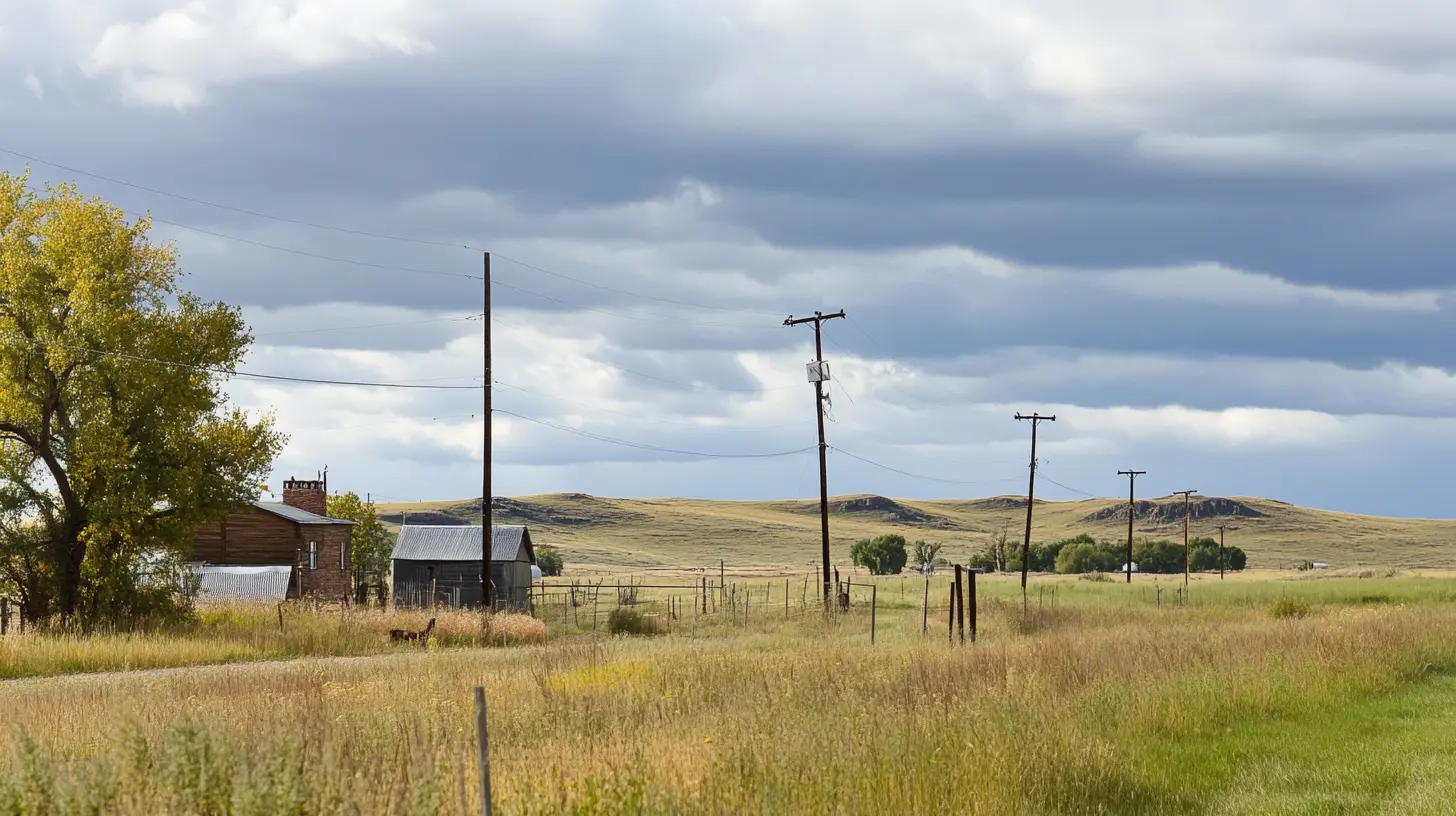
Preface
Internet for Rural Areas is still a major limiting factor in the popularization of ICT infrastructure in many developing countries in the technologically advanced 21st century. Many rural areas in developing countries do not have electricity. At this time, if Internet for rural areas is to be provided, solar system is an inevitable choice. However, due to the conditions in remote areas, large-scale solar system assumptions will actually have many problems. This article mainly attempts to discuss some actual environmental conditions in rural areas to let readers understand why IP65 solar battery enclosure is the best power providing solution for Internet for real areas.
Table of Contents
1.Key Challenges of Build Internet for Rural Areas
1.1 No Power Supply In Rural Area
Source: World Bank
With the evolution of ICT technology, governments of many developing countries are increasingly aware of the strategic significance of Internet coverage for the development of remote areas. Although with the development of related technologies such as Starlink, building Internet for rural areas is not as difficult as before. However, the problem of electricity has become an important factor limiting Internet coverage in rural areas.
1.2 The population density in rural areas is too low, so the income cannot cover the traditional network construction.
The population density in remote areas is too low, and the cost of using methods such as optical fiber or 4G base station coverage is too high. Unless the state invests, private enterprises and individuals will not adopt traditional network coverage methods. Not to mention the problem of difficulty in obtaining electricity.
1.3 The OPEX of Internet for Rural Areas is too high
Building Internet for rural areas not only considers the one-time high CAPEX, but also the long-term network operation and maintenance costs, which are much higher than those in downtown areas. This brings huge challenges to the long-term operation and maintenance of the network.
1.4 Environmental Challenges


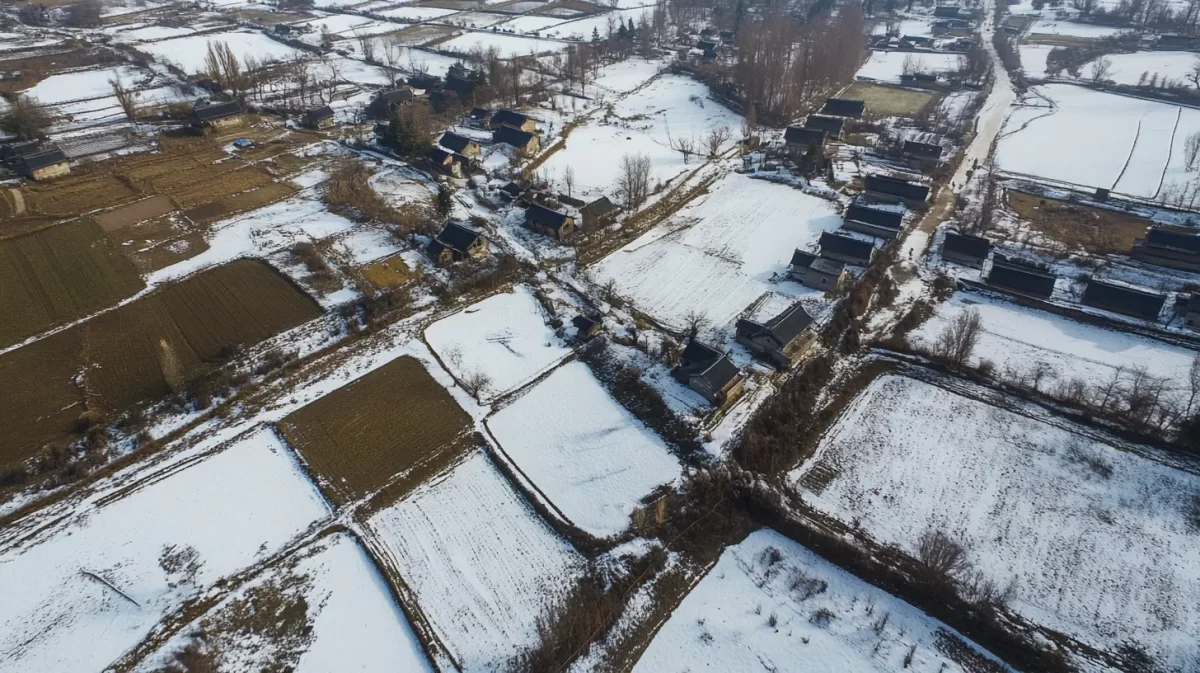

Building Internet for rural areas not only considers the one-time high CAPEX, but also the long-term network operation and maintenance costs, which are much higher than those in downtown areas. This brings huge challenges to the long-term operation and maintenance of the network.
- Mountainous weather changes dramatically, posing challenges to ICT’s stable operation
The climate in the mountainous areas of rural areas changes frequently. These drastically changing environmental conditions pose a great challenge to the long-term operation of equipment. In addition, because the site is located in the mountainous area, it is difficult for maintenance engineers to conduct on-site maintenance and repairs. This inevitably increases the OPEX of the network.
- Areas near the sea
The main problem in the coastal area is the high-salinity and high-humidity air. High-humidity and high-salinity air will corrode equipment. At the same time, high humidity also brings about condensation problems due to temperature changes in the morning and evening, which sometimes even brings major hidden dangers such as short circuits to equipment.
- Winter with Lower Temperature
Because rural areas usually have no electricity supply, solar energy, UPS batteries and other solutions become an inevitable option. However, when the temperature drops below -10℃ in winter, the battery efficiency will be affected, and this involves factors such as battery heating. This makes the Internet for rural areas solution more complicated in this scenario.
- High humidity areas
There are many areas with high humidity all year round. These areas face the same problems as coastal areas.
The above series of problems often make the maintenance cost of Internet for Rural Areas very high. How to reduce the maintenance cost becomes the key to this solution.
2. The key to profitability of Internet for Rural Areas
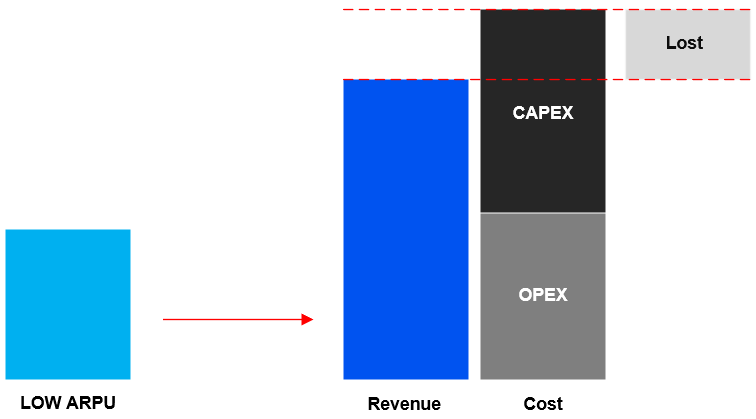
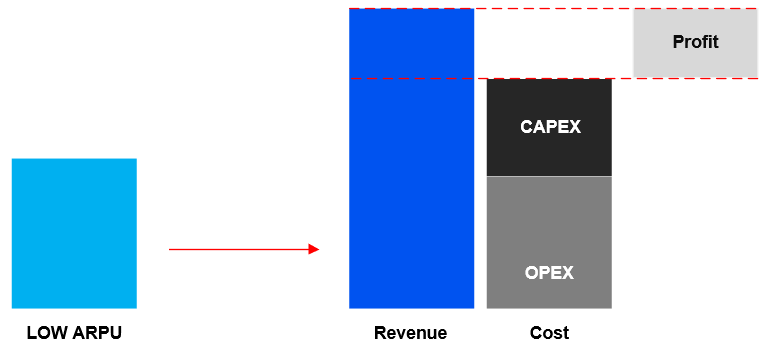
From the various challenges we explained above, it is very challenging to build a network in rural areas and make it profitable. It is necessary to reduce OPEX and CAPEX as much as possible to achieve profitability while achieving low ARPU per capita in rural areas.
4. Network Arechitecture of Internet for Rural Areas
4.1 Network Architecture of Internet for Rural Areas based on Wireless P2P/P2MP and WIFI
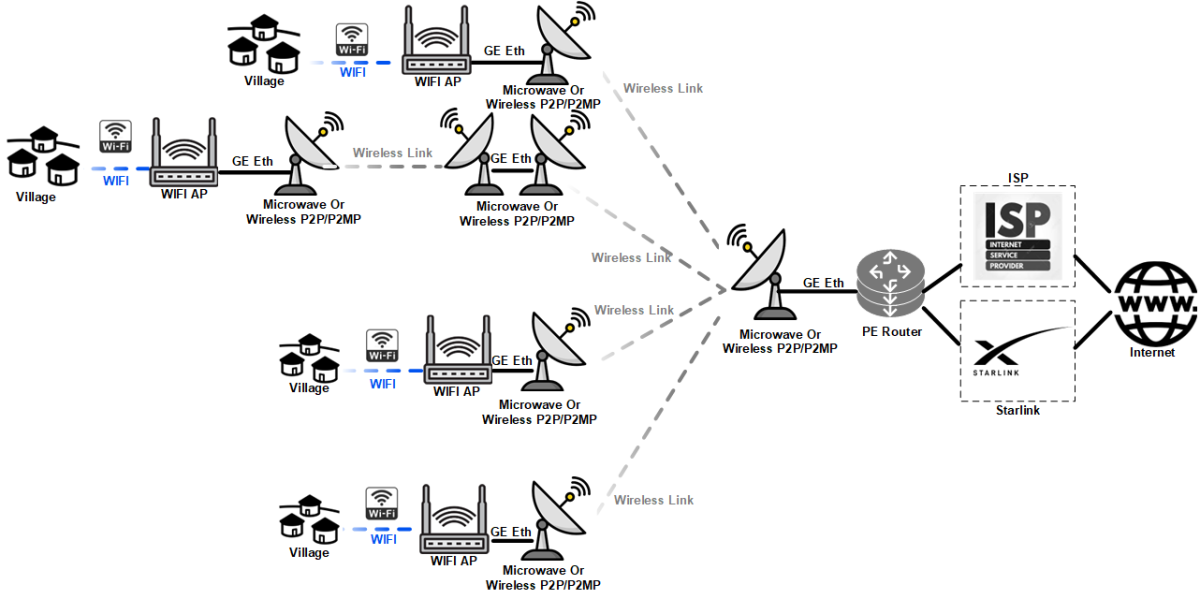
The above is a network architecture that is often used in underdeveloped areas to implement Innter for rural areas. It mainly uses P2P/P2MP wireless backhaul, while assisted by WIFI AP to achieve broadband access for end customers.
Internet Exit in ISP and Central Office
This architecture usually builds a central office to deploy PE routers and Internet service providers. The best Internet service provider here is definitely a reliable local ISP or Telecom Carrier. However, in many underdeveloped areas, ISPs are not easy to obtain in remote areas. With the gradual expansion of Starlink services, using Starlink as an Internet service provider in rural areas is becoming an option for more and more projects.
Central Office to Distribution Node
There are many ways to implement network distribution, but based on the conditions of rural areas, microwave or P2P/P2MP wireless backhaul is generally used. At the same time, this method also reduces power consumption and makes it easier to use solar battery enclosure as the main means of power acquisition.
Intermedia Node
Based on the distance covered by the network, there are usually relay backhaul nodes. The architecture of these nodes is relatively simple, and usually microwave or wireless backhaul equipment is used to implement P2P or P2MP relay, thereby extending the distance covered by the network.
Access Node
Access nodes generally provide Internet services to users in villages or towns. Internet for rural areas does not require complex network services. We believe that if it is a new construction, using WIFI AP to provide low-cost and easy-to-access services to end users is the highest priority design consideration. Outdoor WIFI AP has become an inevitable option. For example, deploying outdoor WIFI AP in the center of a small village allows users to connect and obtain Internet services very conveniently.
Final User
End customers use their own smart phone, pad or computer to connect to the Internet via WIFI. Of course, considering that many rural areas in developing countries have no electricity supply, it is possible to provide low-cost micro-home solar energy storage equipment to end users, so that users can charge terminals such as smart phones.
4.2 Advantages of Wireless P2P/P2MP and WIFI
The wireless P2P/P2MP and WIFI solution has the following benefits:
Easy Site Installation
Site construction is relatively simple, and the equipment is generally light and easy to transport to remote areas.
Low CAPEX investment
Compared with 4G small cell solutions or traditional fiber solutions, the cost is much lower.
Low operation and maintenance cost
The equipment of the user access station is cheap and easy to locate problems, which can be done by ordinary junior engineers. It is also simple to replace spare parts. The overall operation and maintenance cost is greatly reduced.
4.3 Solar Power for Wireless P2P/P2MP and WIFI
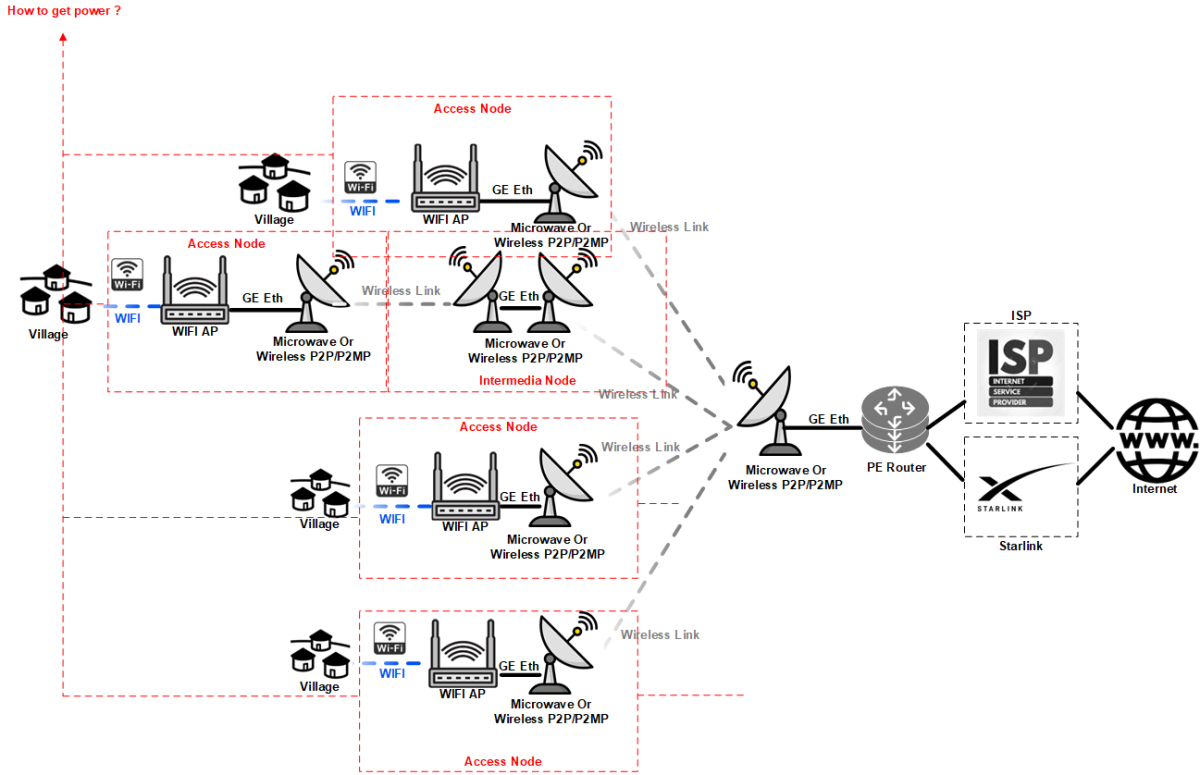
Based on the network architecture we described above, let’s look at the biggest challenge: how to obtain power? We can see that both the intermedia node and the access node are located in relatively remote areas, and most of the time there is no power supply. We believe that these areas must require a solar battery enclosure to power the entire system. And the design of this solar battery enclosure must fit the characteristics of this scenario:
(1) Easy to deploy and transport
(2) Easy to maintain
(3) Very adaptable to the complex environment of the rural area.
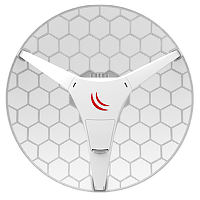

We can see that the power consumption of typical Wireless P2P/P2MP devices is generally not high. For example, the Mikrotik 60GHz P2P antenna in the above picture has a power consumption of only 5W and is powered by POE/POE+. Other wireless P2P/P2MP devices are similar, and generally have the following characteristics:
Power consumption ranges from 5-50W
Powered by POE/POE+/POE++
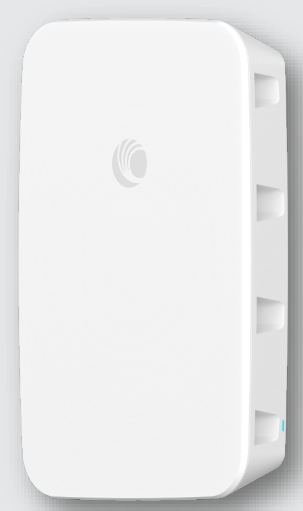
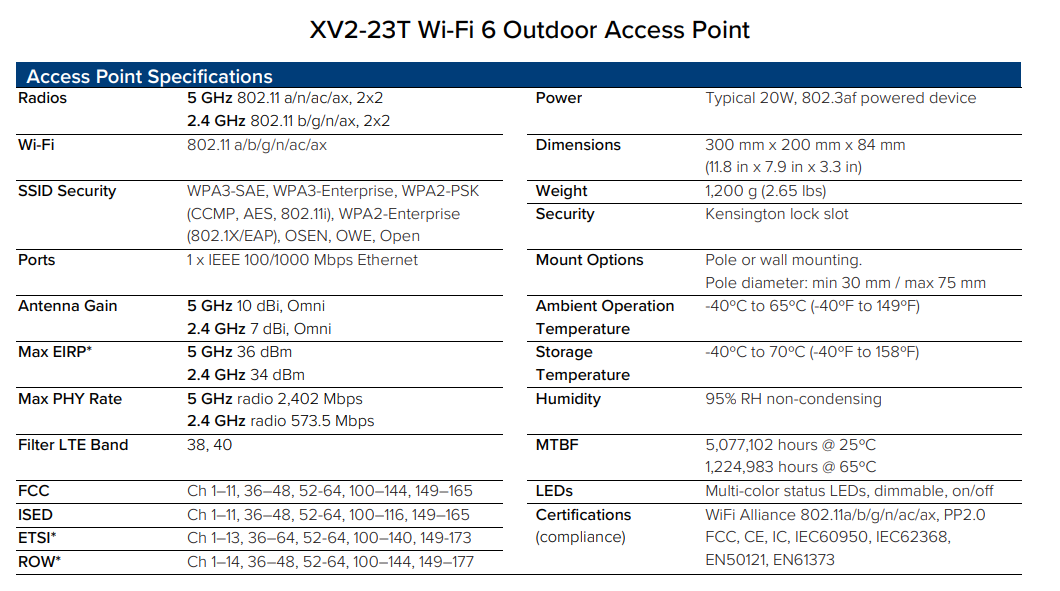
The above is an outdoor WIFI AP from Cambium network. We can see that its typical power consumption is 20W, and its power supply method is POE (802.3af). Generally speaking, outdoor WIFI APs have the following characteristics:
Power consumption ranges from 5-50W
Powered by POE/POE+/POE++
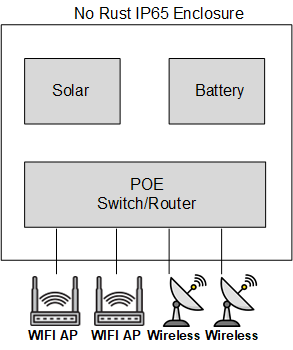
Based on these requirements, we can conclude that the solar battery enclosure designed specifically for the Internet for rural area network should be as shown above. Its main features are as follows:
- IP65 Ingress Protection with Rust Proof Feature
We have analyzed in the previous article that the remote areas covered by Internet for rural areas are relatively complex. When the entire solar battery enclosure is designed to IP65 level, the external environment, whether high humidity or high salinity air, is completely isolated by the enclosure, thus ensuring the stability of the equipment. At the same time, the enclosure surface is rust-proof.
- Solar Controller and Battery All in One
Traditional solar system construction generally consists of two parts: solar controller and battery. Lead-acid batteries are generally used to reduce costs, and then the solar controller, battery and solar panels are transported to the site for installation, connection and debugging. However, we believe that this model is not feasible for the construction of Internet for rural areas. Because this separate approach makes the installation at the site complicated, relatively senior engineers will have to be stationed in the rural area, which makes the installation cost high. At the same time, because the lead-acid battery is very heavy, it is difficult to transport it to the rural area. And from the final installation scenario, it is often installed on a pole. Then a system that is too large and heavy will bring many problems and challenges to the pole installation scenario.
- POE Switch/Router Function Embedded
POE is an inevitable technology for Internet for rural areas network construction. Therefore, we believe that the Solar Battery Enclosure adapted to Internet for rural areas network construction should integrate POE switch/router and solar system and battery into one whole, so as to make the station security maintenance easier.
Therefore, our design concept is to integrate everything into a suitcase and then achieve easy installation at the site, thus avoiding the various complex factors mentioned above and saving installation and maintenance costs.
4.5 Edgeware Integrated Soluiton for Wireless P2P/P2MP and WIFI Based on Solar Power
Edgeware’s Edge Span S60 series is an all in one IP65 solar battery enclosure designed for Internet for rural areas. This series takes into account the challenges of rural area deployment and implements the following key features:
- All in One
We integrate various important functions you need for Internet for rural areas, such as battery, solar controller, switch/router, POE, environmental monitoring, etc. into one whole, which is convenient for deployment and avoids complicated debugging and debugging of the site.
- IP65 and rust proof provide strong environmental adaptability
The entire system has IP65 protection capabilities and the rust-proof capabilities of the entire system built on cast aluminum make the Edge Span S60 series completely fearless of environmental challenges.
- Customized based on customer scenarios
We will carry out customized design and configuration based on the actual network and energy needs of the customer’s scenario, so as to optimize the cost of the customer’s actual site deployment and achieve the goal of profitable rural area Internet deployment.
- Complete remote management and monitoring software platform to reduce daily OPEX
The Edge Span S60 series has comprehensive remote monitoring and management capabilities, which can better help customers reduce site operation and maintenance OPEX after deployment.
Edge Span S60 has a large number of customized models. If you have detailed needs, please contact our sales staff. The following introduces two typical models of Edge Span S60 series.
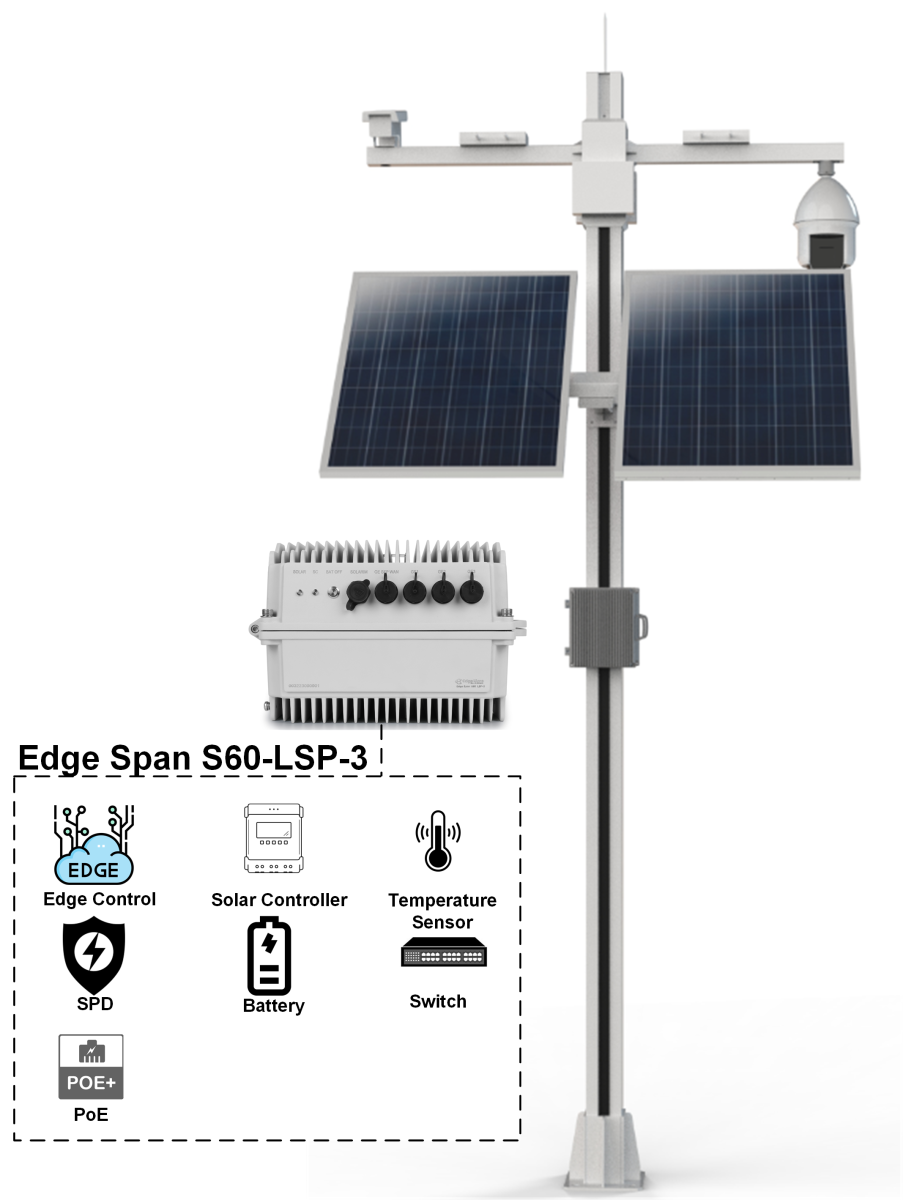
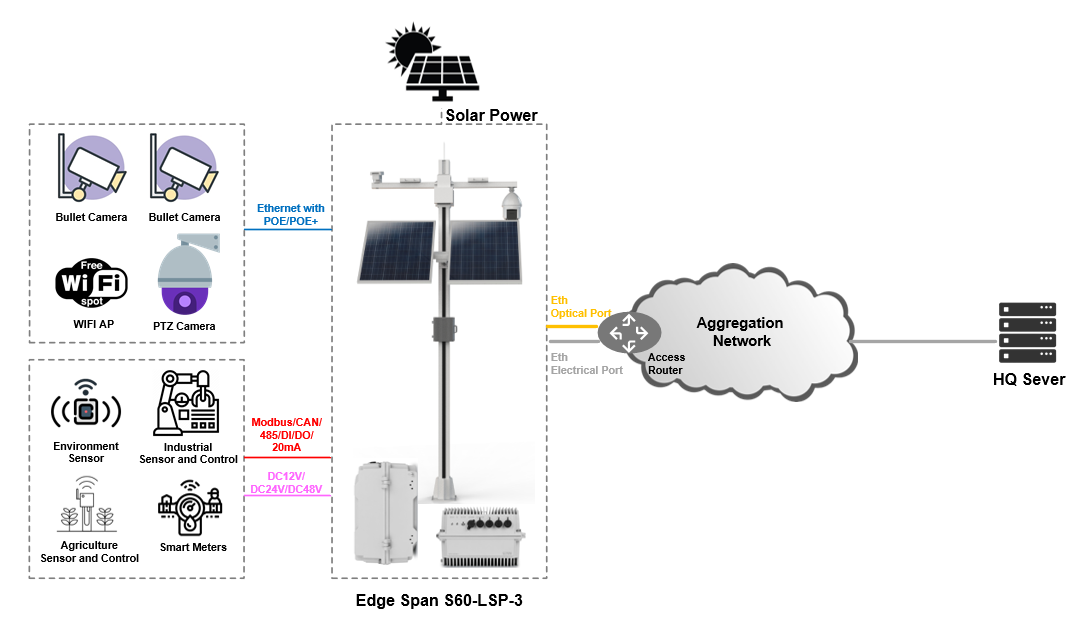
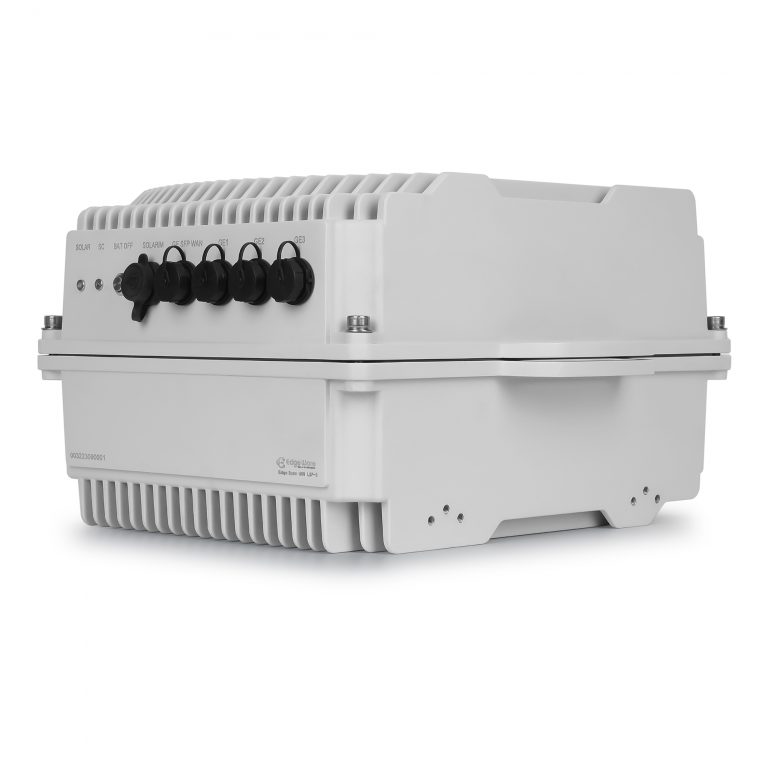
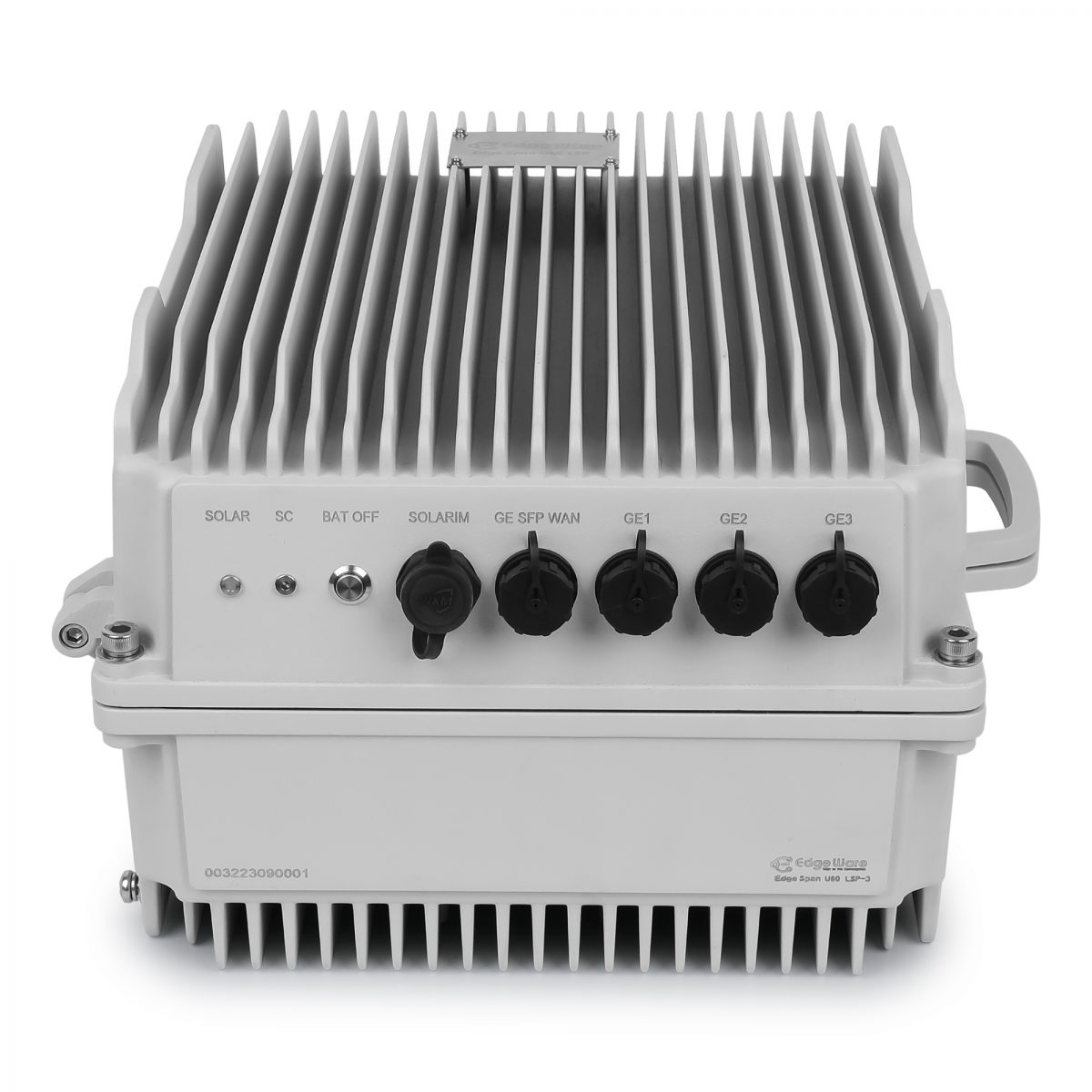
Edge Span S60 LSP-3 IP65 solar battery enclosure is a solar power based outdoor maintenance-free all-in-one enclosure that integrates communications, solar power, lightning protection, and POE switch. The product is specially optimized according to the pain points of Internet for Rural Areas and IoT devices outdoor deployment to achieve the following main functions:
- Industrial grade layer2 POE+/POE++ switch(2 Ports 802.3at 30W, 1 Ports 802.3bt 110W)
- Industrial grade 500W MPPT solar controller
- 48V55Ah lithium battery(48-72 hours system autonomy based on different load configuration)
- Software system for remote management and monitoring
- Solar Statistics
- Surge protection design
- Full aluminum IP65 enclosure for whole system natural heat dissipation ability.
Edge Span S60-LSP-3
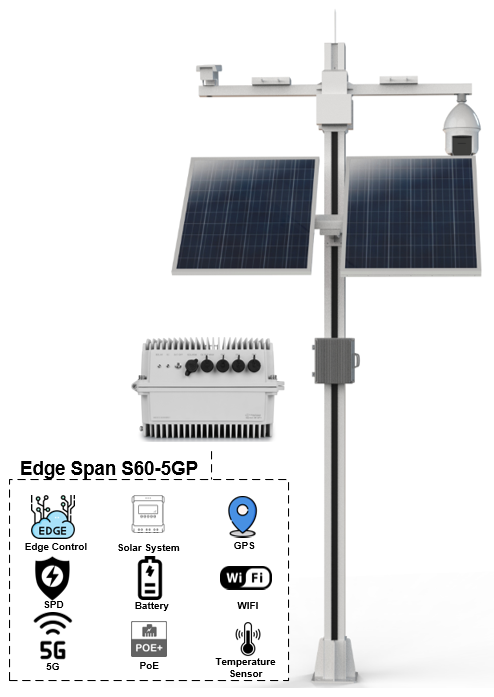
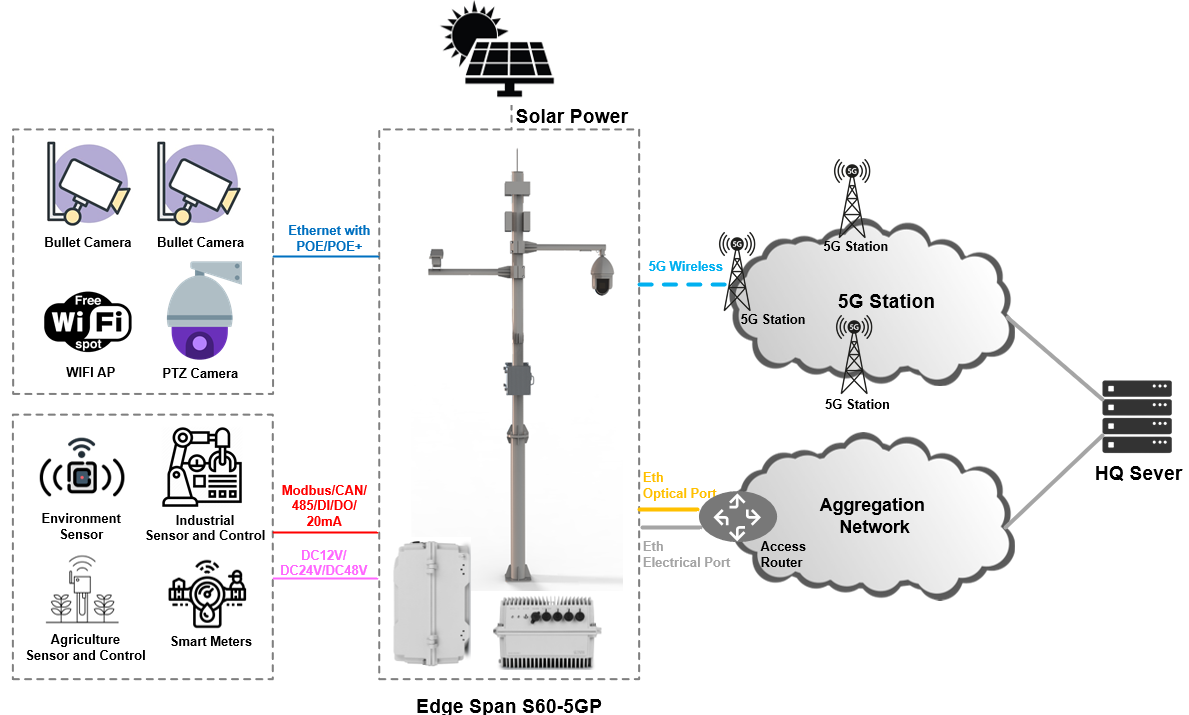
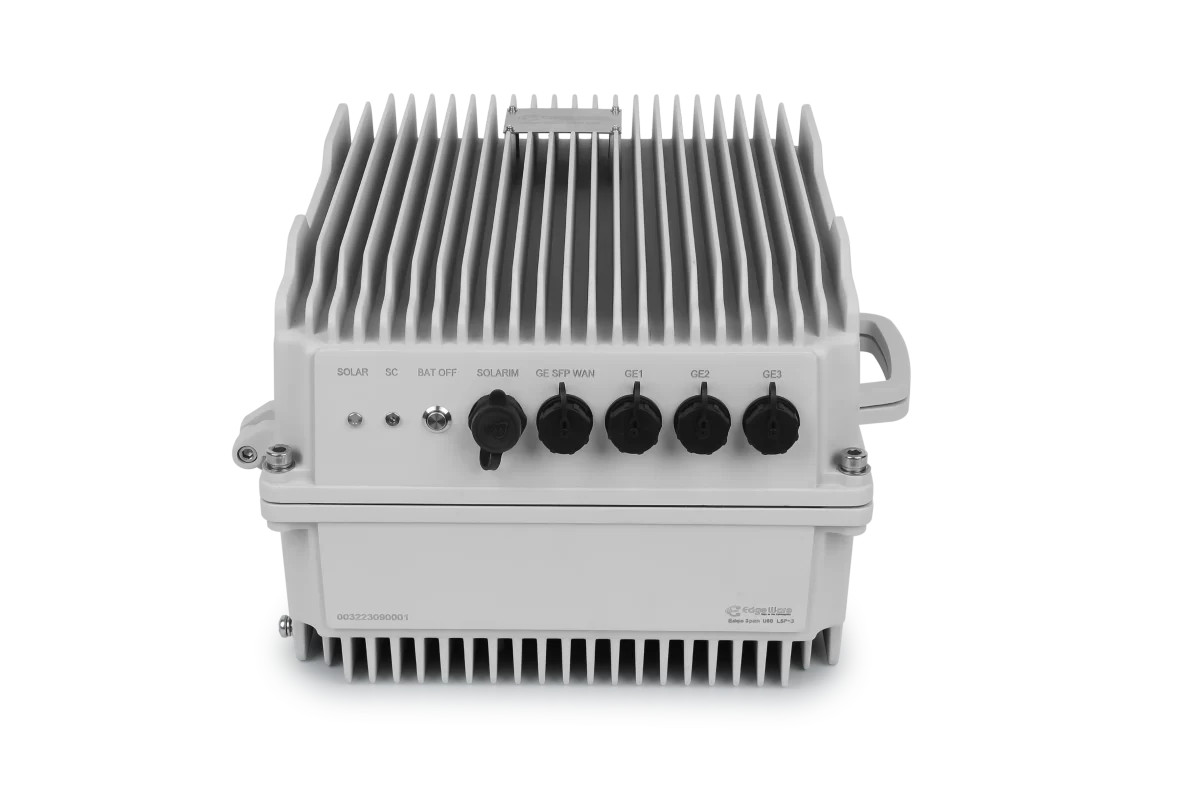
- IP65/NEMA4 Waterproof
- W*H*D 295mm*355mm*214mm
- 22kg
- Aluminum Cast Enclosure Rust-Proof
- Operating Temperature:-20~+55°C
- Working Humidity:5%~90%
- Power Surge Protection:20Ka
- Worldwide 5G/4G Band Supported
- WIFI Optional
- GPS Optional
- RS485/RS232/DI/DO Optional
- Industrial 5G/4G POE Router Module Embedded
- 1*1000Base-X/1000Base-T Combo WAN Port
- 4*1000Base-T LAN Ports
- 3 LAN Ports 802.3at POE+ ( Can configure 802.3bt POE++ one port as requested)
- 500W MPPT Solar Controller
- 2640Wh Lithium Battery(48V55AH)
- Thingsboard Support Optional
- Node-Red Optional
Edge Span S60-5GP
5. Summary
In general, it is not impossible for Rural Broadband Internet to achieve profitability. The key lies in how to reduce operation and maintenance costs through network architecture design so that profitability can be achieved even with low revenue and low ARPU, thereby achieving more coverage and benefiting ordinary rural residents.

